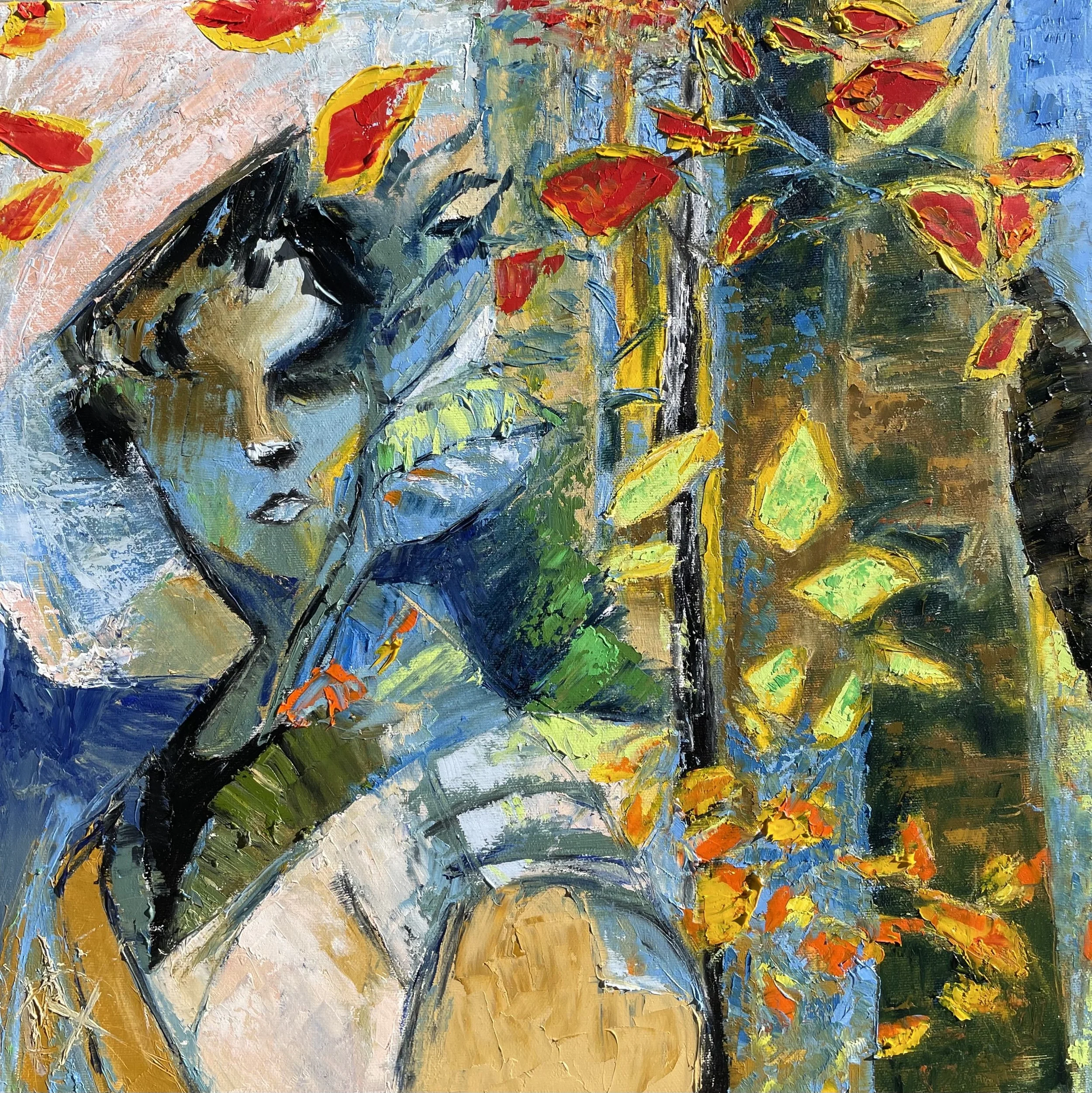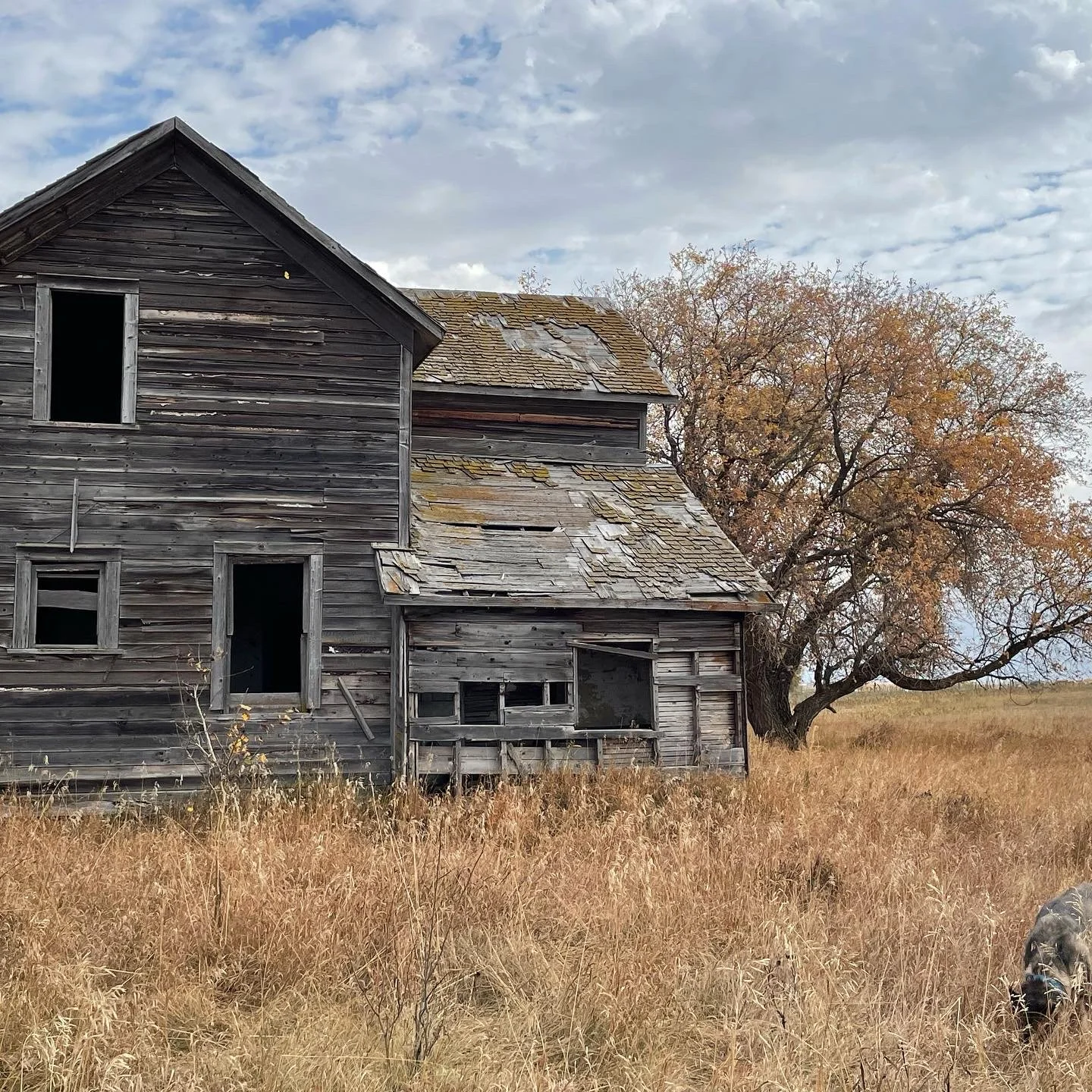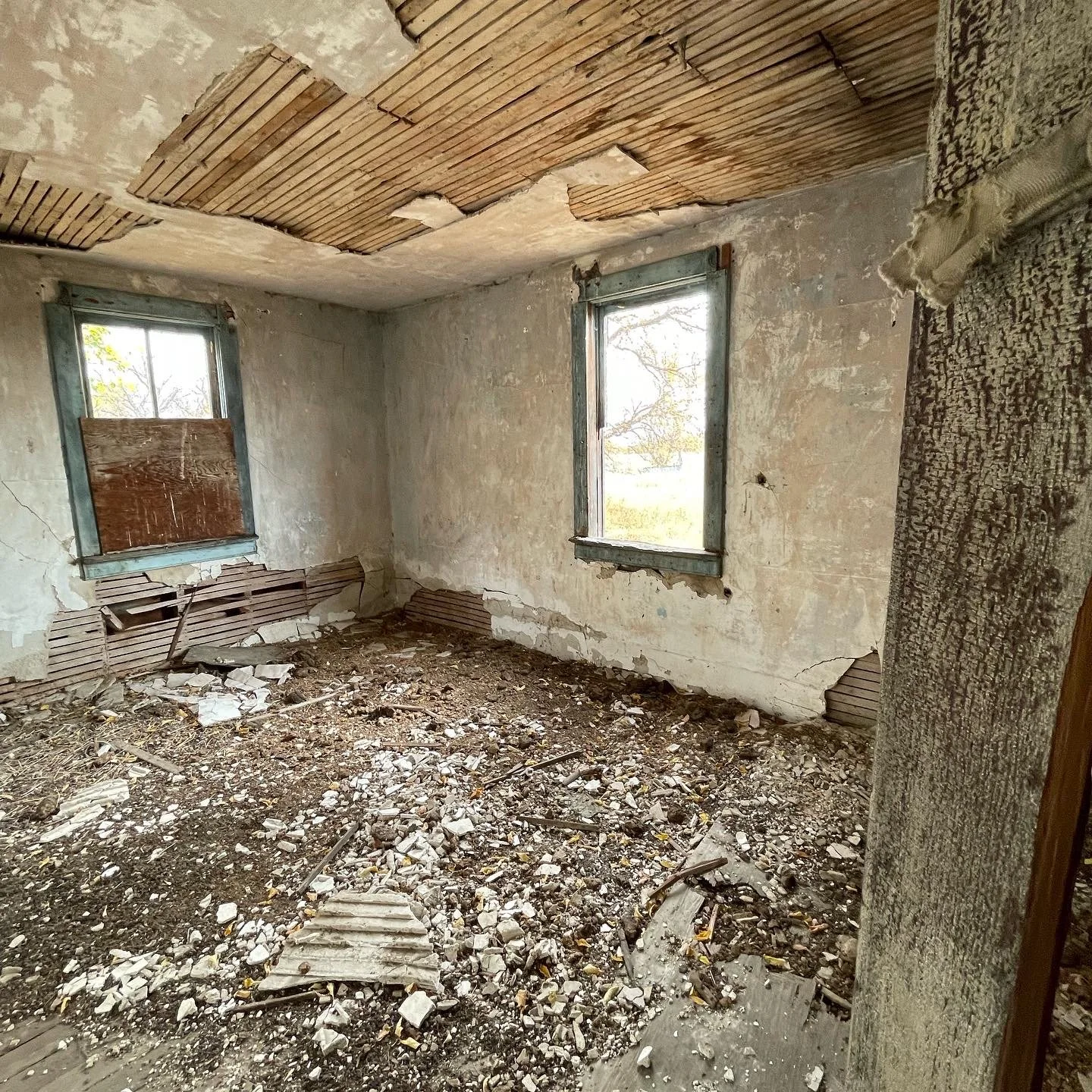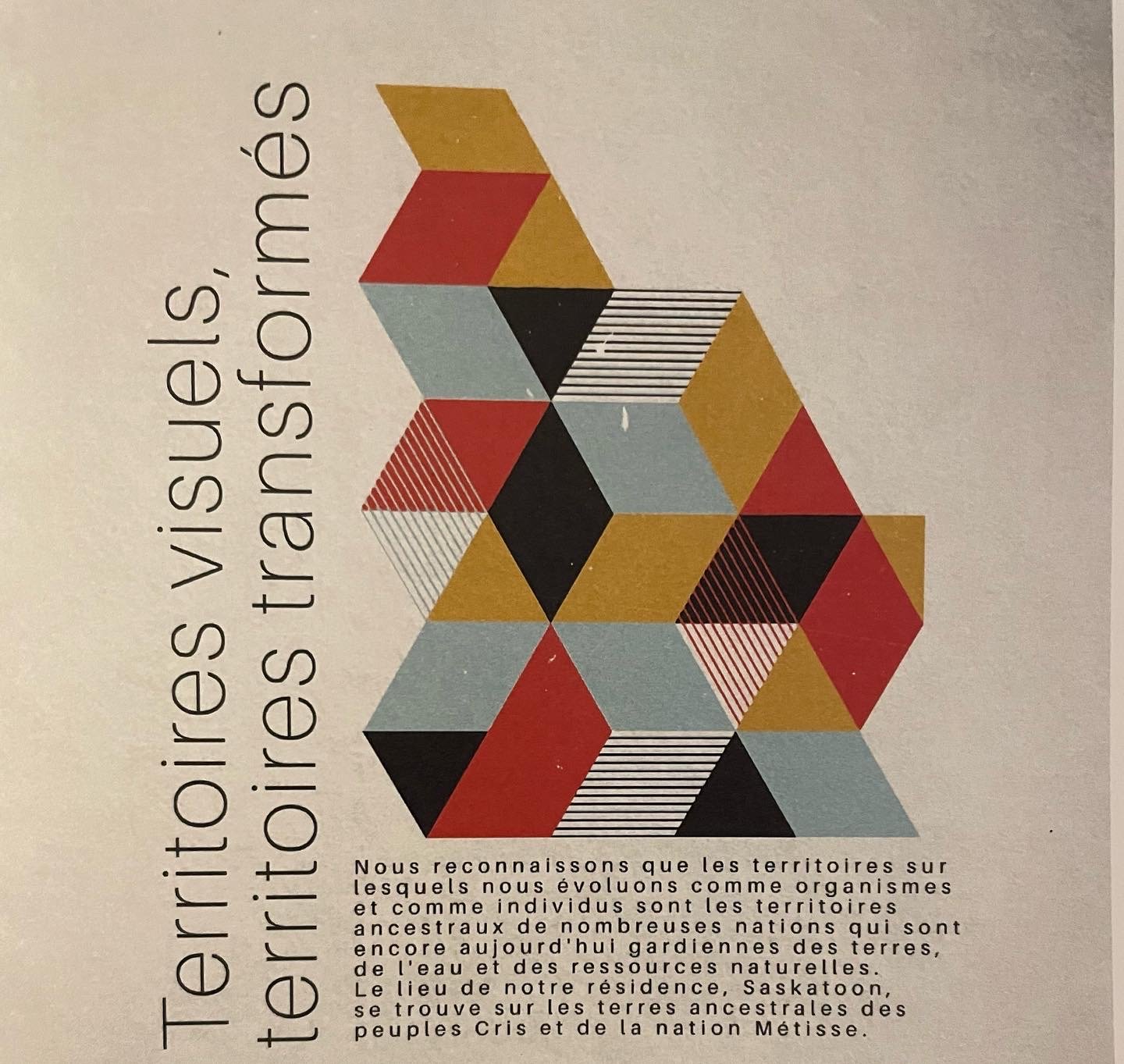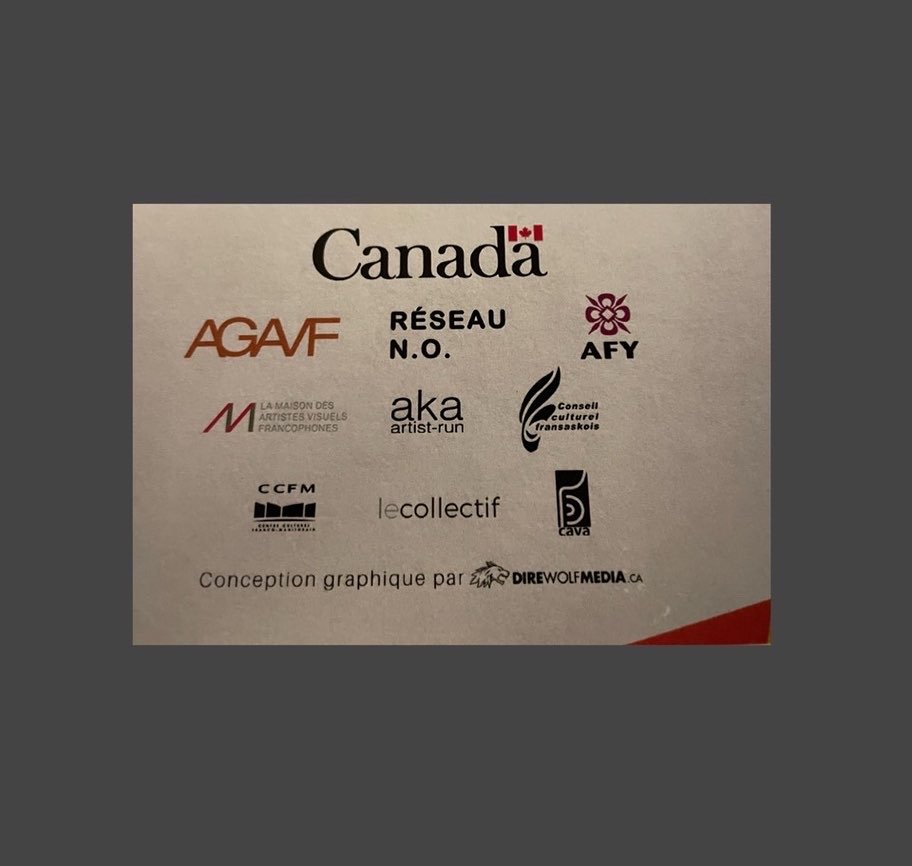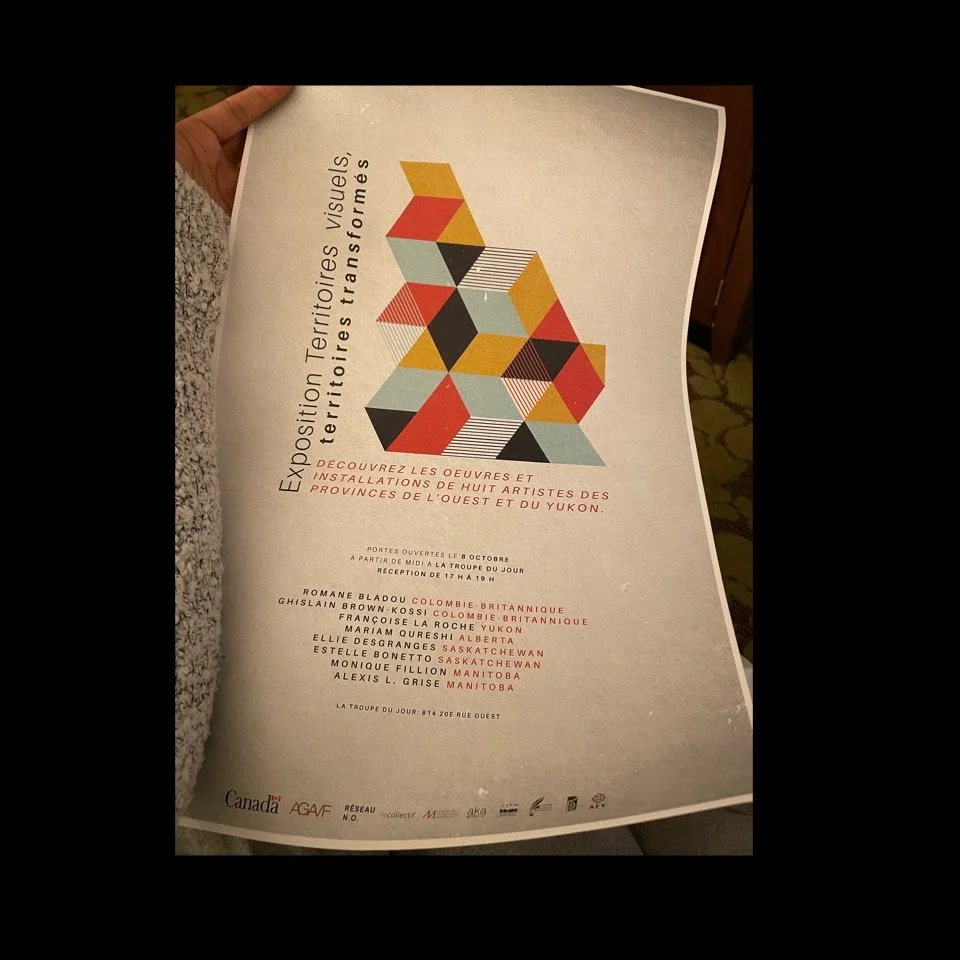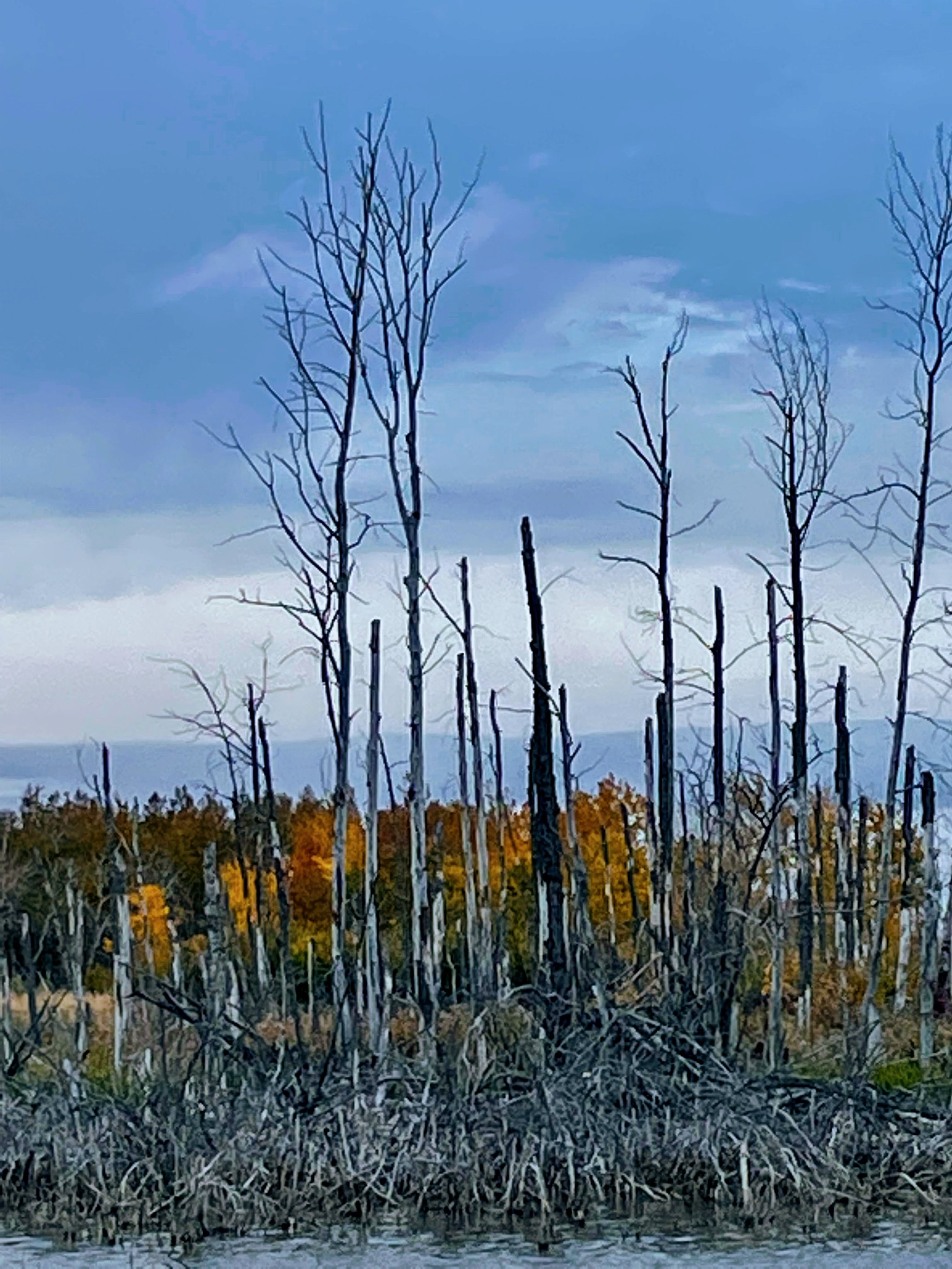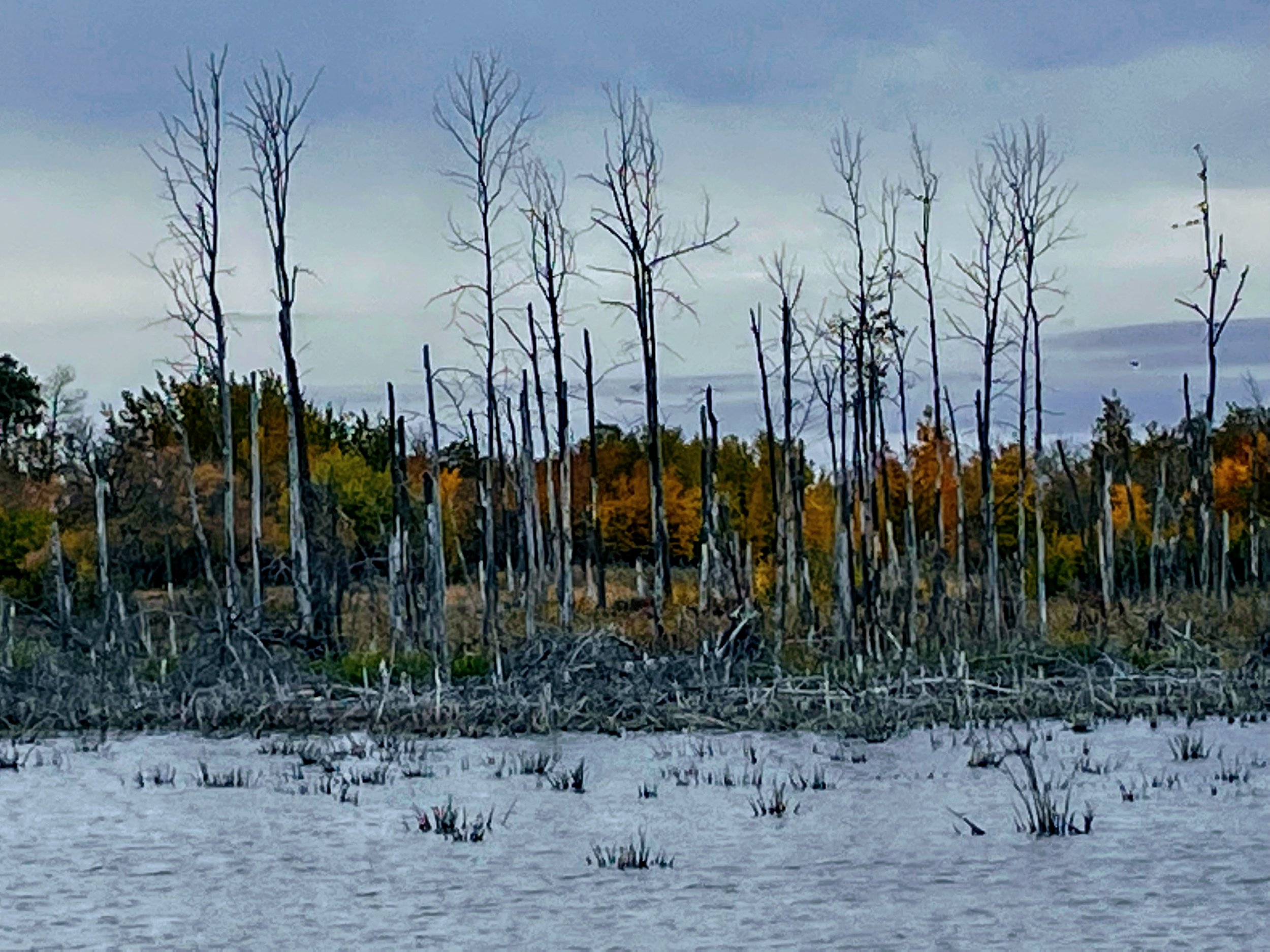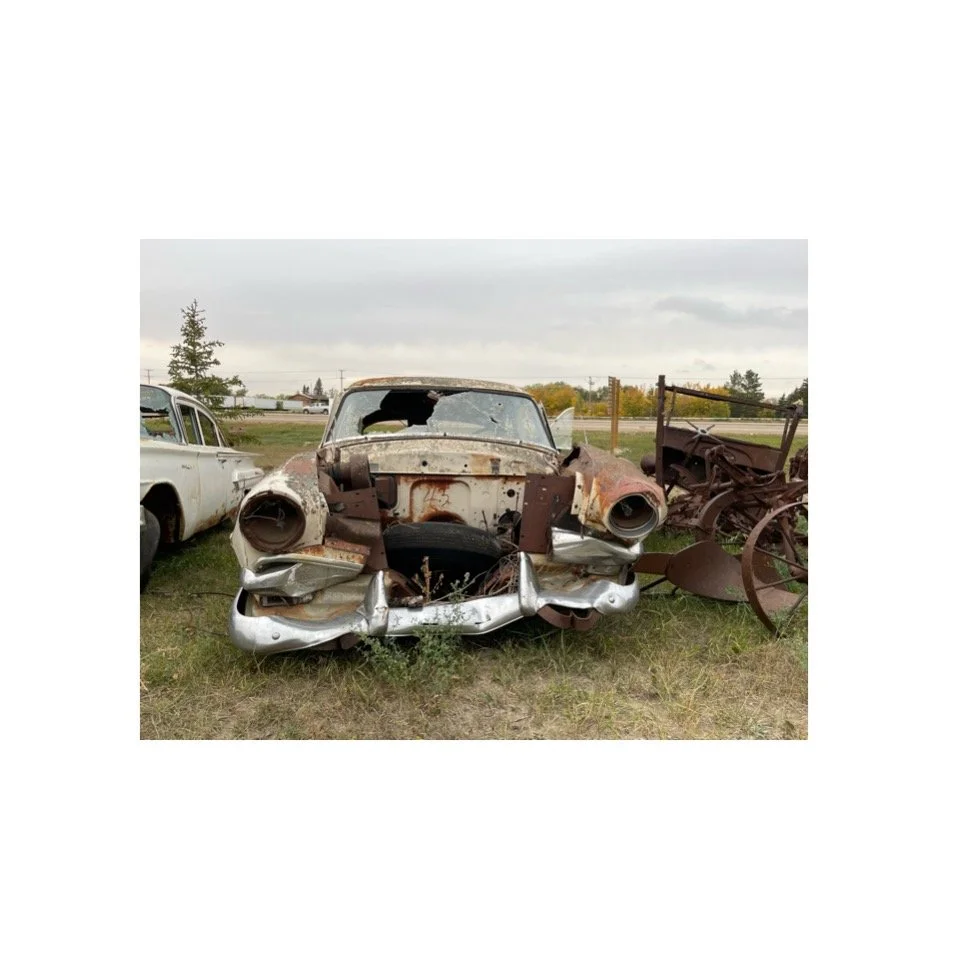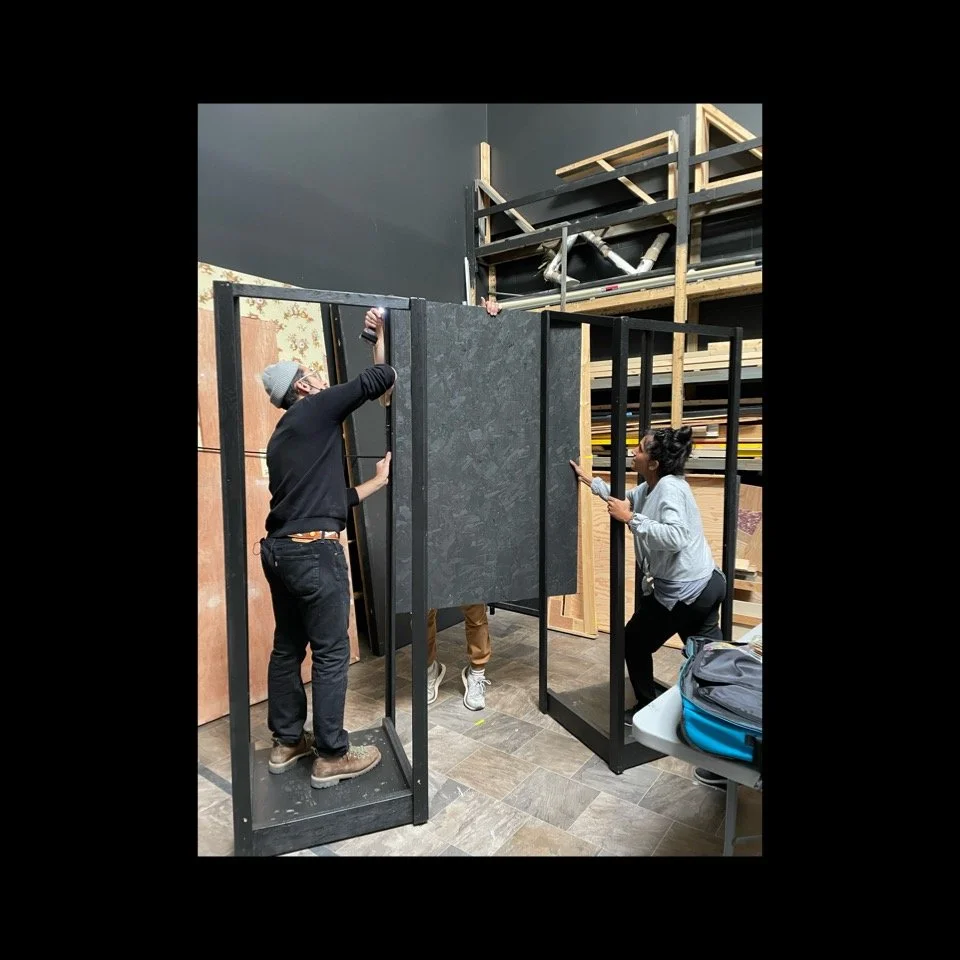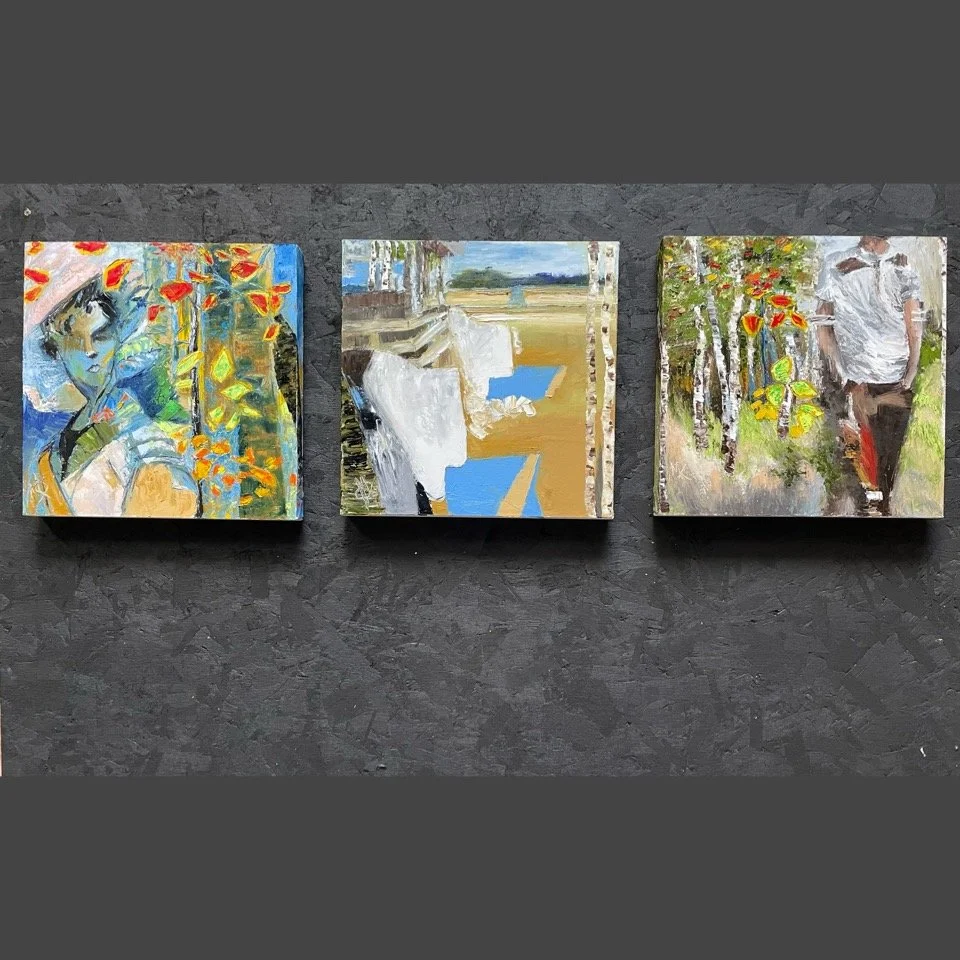Artist residency in Saskatoon, SK.
I was invited to do an artist residency in Saskatoon. I took this opportunity to find purpose in both my art and the environmental conservation projects that I tend to do independently. It was an opportunity for me to discover the roots of my own work. The residency was organized by Association Franco-Yukon and I got to be around 6 other artists who also have a strong connection to nature. The first painting I made was about a woman who lives with only the basics in Yukon, another artist I met during this residency.
Her stories of life inspired me to paint a painting where there was no real distinction between trees, a dense environment where she was part of it or one with it. I used her profile to create a figure. I chose the colours and shapes in the open air of the rooftop patio of the hotel I was staying where I had many amazing conversations with her about her life in Yukon.
During the residency all the artists got to take workshops. After taking a few, I lost all confidence in my work and couldn't see where it connected with nature so I decided to go spend some time doing something in nature that had been on my mind for a while. Before coming to Saskatoon I had been reading about drought, its effects on food, and the role forests play in conservation.
Several variables can cause drought. One thing is for sure, the soil is more susceptible to floods when it is infertile and not sustainable with human activity. A natural but very slow solution to the problem is encouraging the growth of a birch tree forest.
A flood caused by drought on a farm near the TransCanada highway in Saskatchewan, Oct. 2022. (Personal photo)Birch trees are nature’s way of telling us that the soil in the area is low in nutrients. Drought floods are also a sign that water is not soaking into the ground to add nutrients. The birch doesn’t need very many nutrients in the soil to grow. If it is encouraged to develop, like any other patch of trees, it invites life (animals, insects, people and water) which helps deposit nutrients into the soil to fertilize it. Fertile soil can lead to better farm produce and species sustainability, which helps carry the burden of human pollution.
When soil is affected by drought, it is not fertile and cannot absorb water, and this leads to floods, but when a healthy forest floor with grass, trees, moss, bark, and mushrooms exists, the area can soak water into the earth instead of creating run-offs of nutrients. When birch trees grow in areas affected by drought, they help create basins where water can be soaked, and nutrients can be deposited into the soil. However, only after decades will the birch forest turn into a marsh or a bog etc if in drought and if left up to nature alone. Nature is great but we pollute at a very fast pace, decades can mean some species that absorb human pollution may become at risk or go extinct. Leaving it up to nature to make this better is sometimes deadly and always a very slow process meanwhile pollution we produce is happening at a very fast pace. This way of living is not sustainable! With proper care for habitat, we can help speed up natural environmental conservation.
So, while doing an artist residency in Saskatoon, I went out to paint in a drought-affected area, looking for a purpose to my paintings and ideas for the second painting.
I went to where some birch trees were growing and where there were signs of flood and drought. I found a site near a dog park close to the Dutch Garden Nursery. The site needed a trail into the forest to encourage the water to be directed into it. The flood caused a run-off to the highway (a useless direction), so to enable the water to go towards the woods, I thought I should try starting a trail into the woods. I started walking and soon realized that if I painted on that path, people from the dog park near by would come to see and unconsciously walk on the path making it a stronger trail. Since the trail is leading into the woods it will help direct the rainwater into the path of trees.
So I walked and painted there for 5-6 hours, this created a path and many people walked over and strengthened the path. People would walk up to me and look at what I was painting. We had some exciting conversations, and It helped me find purpose in my painting, while it was also building a path toward the birch trees. I quickly realized that sometimes even when we are in nature we are conserving it.
The more people will walk on that path the “greener” the area will get. Without even knowing it people’s trails into the forest will re-direct the rain or flood water into the forest, which will at least speed up the environmental cycle which feeds nutrients into the soil. At the end of the day, I was feeling pretty strange but also very satisfied. It wasn’t much, but at least I know that the next time it rains, some water will be redirected into the woods. People who were there and asked me what I was doing also found out more about the importance of the birch tree forest and became more enthusiastic to walk into the forest. I would say overall it was a good day. This act of painting in the open air, also leads me to a new adventure of joining my two loves nature and art together in the future for the purpose of sustainability.
As I roamed the prairies, I noticed signs of the abandoned barns and junkyards of old cars all being taken over by nature and abandoned by humans. So really last minute I got another idea for a painting.
I painted this as the last painting during my residency but it summarized all the expressions, sentiments and imagery I was feeling through out the trip. I think i’m going to Titled it broken paths to sustainability.
Thanks to the organizations which made this possible for me to do, I am filled with inspiration and ideas for projects and art. Here are a few more pictures I took during my time in Saskatoon. You can also see a timelapse of the drawing for Broken paths painting on my instagram page. Thanks for following my journey, stay inspired and keep on keeping on!

